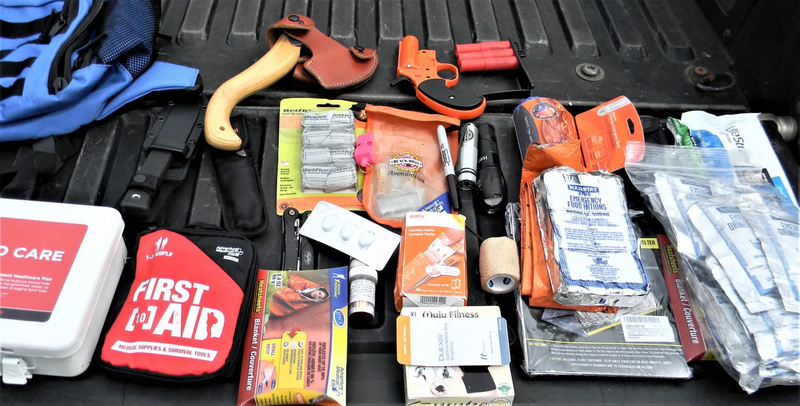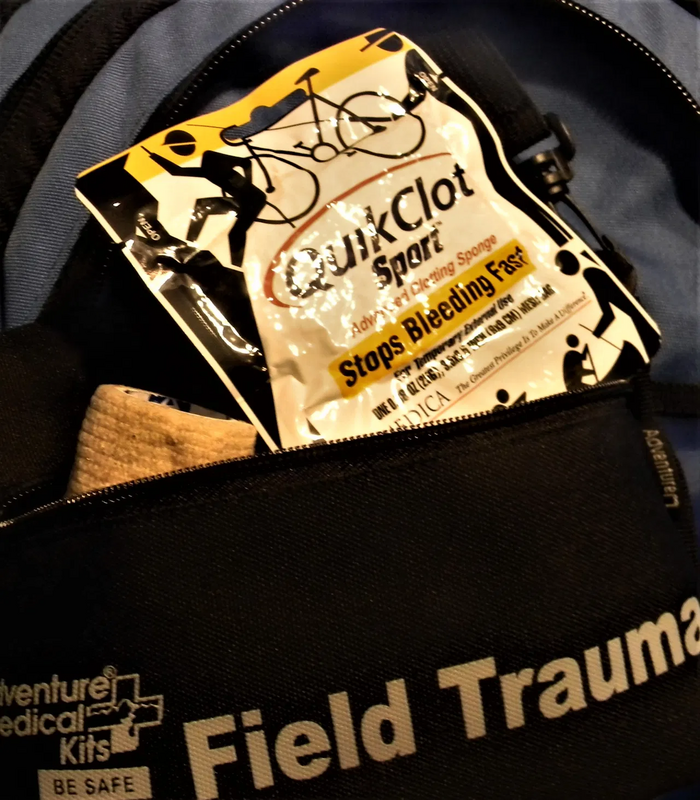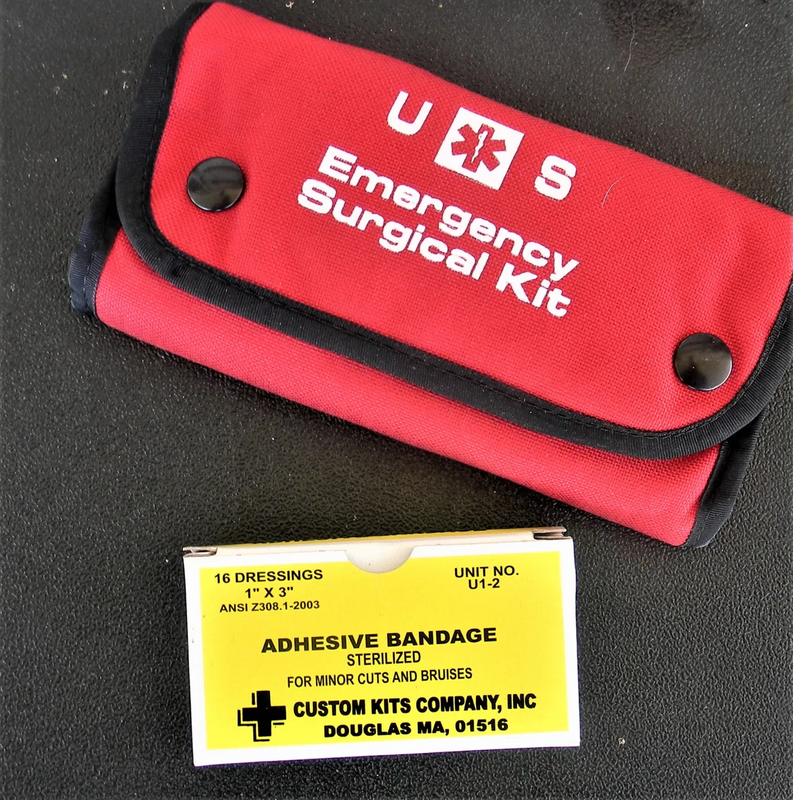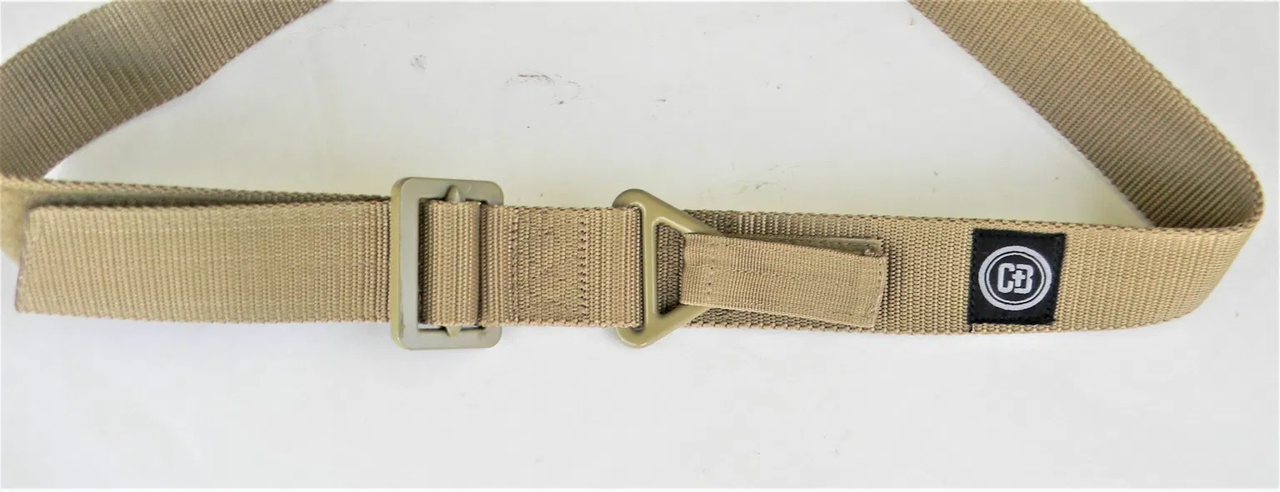
Posted on 02/16/2021 2:24:35 AM PST by mabarker1

Splinters from bullets, bouncing bullets, organs moved about in the body, shockwaves — the bottom line is, actual damage from the bullet is what occurs!
Preparation is priceless.
While we may choose the proper handgun and ammunition, as well as a proper holster, we ignore dealing with the worst scenario.
Let’s talk about what happens if there is a gunshot wound.
Editor’s note: This article isn’t meant to be medical advice. Consult a doctor for a professional opinion and always call 911 or seek emergency assistance if there is a life-threatening gunshot wound.
Why Gunshot Wounds Happen
Getting shot may happen at any number of junctures. There have been negligent discharges in shops, on the range and during training classes.
It isn’t always getting shot in a gun battle. It is always a good thing to be prepared and know how to take care of a gunshot wound.
No matter how much training, whether it be personal-defense classes or just time on the range you have had, an accident can happen.
At home, at the range, anywhere, at any time.
Nobody wants to end up in that situation, but always be ready to take care of yourself if you end up taking a bullet or someone else is wounded.
On the bright side, only about 10 percent of gunshot wounds are fatal.
It is possible to survive a gunshot, maybe even multiple wounds, it all depends where the bullet goes once it enters your body.
Getting it under control is what matters, because almost all fatalities from gunshots are due to blood loss.
There are many myths concerning bullet wounds. Handgun bullets make an entrance wound of caliber diameter.
The bullet then penetrates to damage bones or organs. Secondary missiles thrown from the bullet are rare.
Bullets don’t bounce around in the body, although a round-nosed bullet may bounce off bone to an extent.
Bullets don’t have enough energy to bounce around in the body.
Secondary infection may be a real problem, but that is a concern after you treat the initial injury.

You can get shot anywhere, so I’m going to break down how to take care of different gunshot wounds on different areas of the body.
Some places could complicate issues a lot more, the head or chest for example.
Of course, your best option, if you can, is to make it to the hospital as soon as possible, if not, this should help you out.
If someone takes a shot to the head and is still conscious, start off by sitting them up and leaning them forward so blood isn’t getting caught in their throat.
If they are unconscious, lay them on their side and pull their knees forward to keep them in that position.
Keep applying pressure to the wound to slow down bleeding, make sure you don’t use tourniquets around their neck while applying pressure to their head as well.
I have arrived and witness an individual set bolt upright after a bullet flattened on his brow.
Another case saw a bullet follow the line of the skull and exit the rear of the scalp, with little permanent damage.

A gunshot wound to the chest can be very serious. A lot of people tend to call them “sucking chest wounds.”
The reason for that is you face a major issue of a lung collapsing.
The first thing you need to do is get some kind of occlusive dressing or bandage for it.
What that is, is an air and water-tight trauma medical dressing. They normally have a waxy coating to provide that seal you will need.
That way you are closing off anything from entering the lung.
Use that and some pressure when applying it and you can drastically help something that could quickly turn into a fatal issue.
Another thing to take into consideration with a chest shot is how far it went through them.
There is always a chance that it went far enough through to damage the spine.
That’s why it is important to have them sit upright and keep them as still as possible.
Sudden movements can cause serious damage to the spinal cord, which can ultimately result in permanent paralysis.
If the heart or major blood vessels get hit, there isn’t much you can do. You will definitely need medical help.

Now on to the arms and legs. Like before, the main thing with these wounds is to keep pressure on them.
Watch for skin discoloration, swelling and hemorrhaging. These can all be signs of internal bleeding.
This is when you need to be very careful, because it can be fatal.
Try elevating either the arm or leg as well, because this may help some with the bleeding. If the bleeding will not stop, you may have to use a tourniquet.
A tourniquet is a medical device that helps slow down, but not cut off, the blood flow to whatever limb you are using it on.
You can also make one out of a rope and stick if you don’t have a medical one. Fasten it high and tight on the limb.
You may have some side effects from using these, such as nerve damage or soft-tissue damage.
But, if the person you are helping is losing a lot of blood quickly and nothing else is working, it is better to try and use a tourniquet than for them to end up losing an arm or leg.
Even then, it is better to lose a limb than your entire life.
There is also a possibility that a bone was injured during the shot, and in that case you would need to apply a splint.
Another main issue is organ damage, which often results in organ failure. If that happens, there really isn’t much you can do at that point.
Tissue damage isn’t anywhere near as bad. The thing about bullets, is you never know where they are going to go.
Once they enter you, there is no promise that they will tear straight through. They may strike bone or they may stop in the solid organs.
They may even hit more than one organ, and tear through arteries and veins in your body.
Just one gunshot to the arm or leg in the wrong spot can kill you if you’re not lucky.
We will never know what path a bullet is going to take unless we have observed the exact angle.
All we can try to do is help the person once it’s happened.

I know you’re probably terrified by now, but think about it this way, statistics show that you only have about a one in 514,000 chance of dying from a gunshot wound in America — but then, the possibility is endless.
Keep in mind that number comes from a lot of deaths, such as mass murders, suicides and gun-handling accidents.
Some of which can’t be prevented. That’s really low and, like I said before, most of those deaths are from blood loss not being treated properly.
If you make it to the hospital with your heart still beating, you have a 95 percent survival rate!
Most survivors of gunshots say the worst feeling was their blood running down them, and said it feels like an “intense burning sensation.”
My friend Trevor remarked it was like getting hit by a strong boxer. (His was a 7.62 x39mm hit from a ‘Terr.’)
Most people’s problems come with dealing with the aftermath of a gunshot.
A lot of gunshot victims, survivors, suffer from PTSD afterward. Recovery can take from months to years.
Leaving the person emotionally scarred for a lifetime. About 77,000 people in America are recovering from gunshot wounds each year.
No one is alone in this. There are therapy groups for victims and special counseling they can go to that may help put their mind at ease.
All of the factors I showed above help out in gunshot survival, but there are many, many more that lead to recovery.
Physical and mental therapies are the main things that will lead and help to a road of recovery.
Wound-Packing Gauze 1-2 Pairs of Nitrile or Vinyl Disposable Gloves QuikClot or Celox Hemostatic Gauze Chest Spike or Decompression Needle (Only If Trained) Do you keep a trauma kit for gunshot wounds? What do you pack? Let us know in the comments below!
When Wilburn Roberts was a young peace officer, he adopted his present pen name at the suggestion of his chief, as some of the brass was leery of what he might write. This was also adopted out of respect for families of both victims and criminals. The pen name is the same and the man remains an outspoken proponent of using enough gun for the job.
He has been on the hit list of a well-known hate group, traveled in a dozen countries and written on many subjects, including investigating hate crimes and adopting the patrol carbine. He graduated second in his class with a degree in Police Science. It took him 20 years to work himself from Lieutenant to Sergeant and he calls it as he sees it.
1) A Manual Type Sphygmomanometer and Stethoscope (Blood Pressure Cuff) and the knowledge of how to use it, not only for Taking Blood Pressure but also to listen to the Lungs and Heartbeat.
The Sphygmomanometer can also be used for a Tourniquet. Be sure that You purchase a Cuff in Large and one for Small arms so that if you need to use it on a Thigh to control bleeding of the Femoral Artery you can combine the two to reach around the upper Thigh.
2) Tampons and Pads for controlling bleeding by inserting the Tampon into the wound hole and Pads for Direct Pressure Packing Bandage.
3) Get some Quik Clot.
4) 90+% Isopropyl Alcohol in a squeeze bottle that’s easy to open top. For Quick cleansing of Your Hands or the Wound area.
5) Learn how to use the Items in Your Kit. It’s useless if you don’t know how to use what you have. If you have a good Doctor ask Him/Her some questions about things.
At the Link are Comments after the Article with good information.
I’m going to bed after I get this Posted but will be back later in the day. Stay Safe and Take Care.
(((Ping)))
Points to ponder:
1. Tampons into wounds AFAIK is no longer recommended. While absorbent, they do not aid clotting, or really slow blood loss like direct pressure does AND they can introduce dirt and germs leading to infections.
2. Quick clot IS a coagulant and does greatly help with blood loss. But I read that quick clot should be removed from a wound prior to closing it. I forget the name but supposedly there’s a new organic quick clot like stuff that can be left in the wound.
FYI, I am still keeping my kwik clot in my BoBs and IFAKs.
Add to the article: Take a “Stop the Bleed” class to practice the skills mentioned in the article with the actual recommended products.
Also, strongly recommend Dark Angel IFAKs and blow outs.
bkmk
Use new ones...
I would not sit someone with potential blood loss and spine injury up let alone a head injury Move them as little as possible to get out of danger and render aid
Never pour isopropyl alcohol in a wound. It devitalizes tissue and increases chance of infection. If they survive the wound it will be thoroughly and appropriately cleaned when you seek medical attention
w1n1 will put pictures of it on 'Am Shooting Journal' under the category 'humor'.
First. I put three 7.62 NATO rounds (M14) into the chest of a Viet Cong woman who was shooting at me. (I’ll never know why they weren’t fatal.)
She was pretty much incapacitated after that. I took her ChiCom SKS rifle away from her, turned her over and opened her blouse and put 2 standard issue battle dressings and a bunch of tape on the wound to slow the bleeding. I then called for a MEDIVAC helicopter and she was in a hospital within a half hour. I know she lived, because I spoke with her 6 weeks later.
I think getting to a hospital quickly is what made the difference between living and dying.
“This is the author’s handy surgical kit. If you are not trained it is worthless.”
Just because you don’t know how to use something doesn’t mean somebody around you doesn’t know how to use it.

It has always been my opinion, just an opinion shooting many ball rounds over the years, mostly M-1. If they don’t get a chance to tumble some they just punch a neat hole. There is still some reverberation but the bullet expansion as we know is non existent. However, your life experience if far greater than mine. Thank you for your service.
That neat hole is what’s left after the hydrostatic shock subsides.
“make sure you don’t use tourniquets around their neck ”
Thanks for the tip.
L
Sometimes in wartime, personnel will take a round and never know it until it shows up on MRI 10 years later.
You’re a good man, thanks for your service.
For a description of an up-close gunshot, read the autopsy report of Lee Harvey Oswald. A .38 Special snubnose discharged standard load round nose bullet was used.
“... I’m assuming the rounds just zipped. How close to you was she? ...”
Distance 50-60 yards. I was in a boat and she was behind some bushes on the river bank.
All 3 rounds went in the front (center of mass) and out the back. Somehow they missed all organs, major blood vessels and bones. One battle dressing on her back and one on her chest.
Evidently some people are just hard to kill.
But she was cute (as a VC enemy soldier goes) and I’m glad she didn’t die.
Disclaimer: Opinions posted on Free Republic are those of the individual posters and do not necessarily represent the opinion of Free Republic or its management. All materials posted herein are protected by copyright law and the exemption for fair use of copyrighted works.